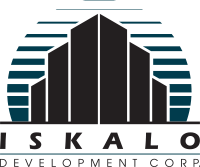With flexible workspaces becoming more popular now than ever, designing for mental health should be an important part of the process. The mental health of employees impacts their productivity, mindset, and energy throughout the day. If a worker is uncomfortable or stressed, they likely won’t deliver their best work.
This became especially relevant during the initial quarantine of the COVID-19 pandemic. A study performed by McKinsey & Company discovered depression, stress, and anxiety were already increasing before the pandemic. Of course, the pandemic didn’t make these struggles any easier to handle, and many employees continue to face mental hardships. Many of these issues are due to the transition process back into a work environment after time away.
Having flex spaces–such as coworking offices–available can help improve some of these mental factors. Working with a business that understands the importance of mental health also can lead to more flexibility integrated into the day. Designing community spaces focused on the mental health of those who would be present is a positive step in the right direction.
What to Think About When Designing for Mental Health
When accommodating many different people, mental health design architecture and accessibility should be part of the design plan. Below are three important elements to include when designing for mental health in a flexible workspace.
Freedom of Choice
For those who struggle to focus in the same workspace all day, having the choice to leave and work from the community can be a blessing. When a flex space works with businesses who understand the diverse needs of their workers, mental health benefits overall. Choice and control often walk hand-in-hand when it comes to minimizing stress in the workplace. Once everyone is involved within a business, mindsets change–and so does productivity.
Community access
When people work together comfortably, it can help the mental, emotional, and physical well-being of those involved. Flex spaces offer this to office workers who need that change of pace throughout the day. Flex spaces also provide the opportunity for collaboration between local businesses. Since the environment in a flex space is so diverse, you never know who may walk in with knowledge or experience you can connect to.
Inclusive design
An important element of flexible coworking spaces is inclusivity. Inclusive design in a flexible workspace not only physically supports visitors but uplifts them mentally as well. When the unique needs of everyone are being met, workers are more likely to return. If someone in a wheelchair cannot get into the building, they will probably not return. Designing for mental health also means designing for the physical and emotional well-being of those visiting.

